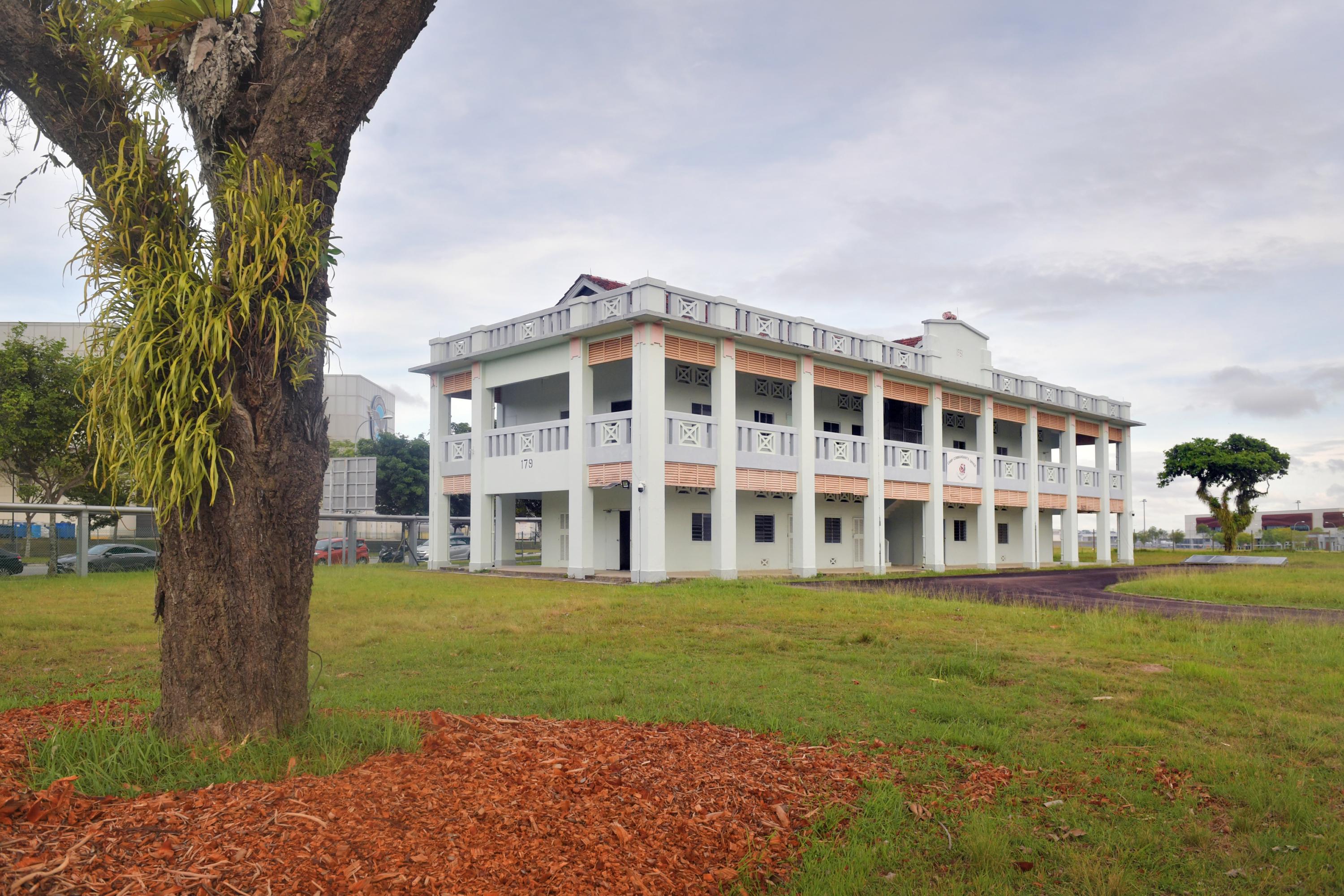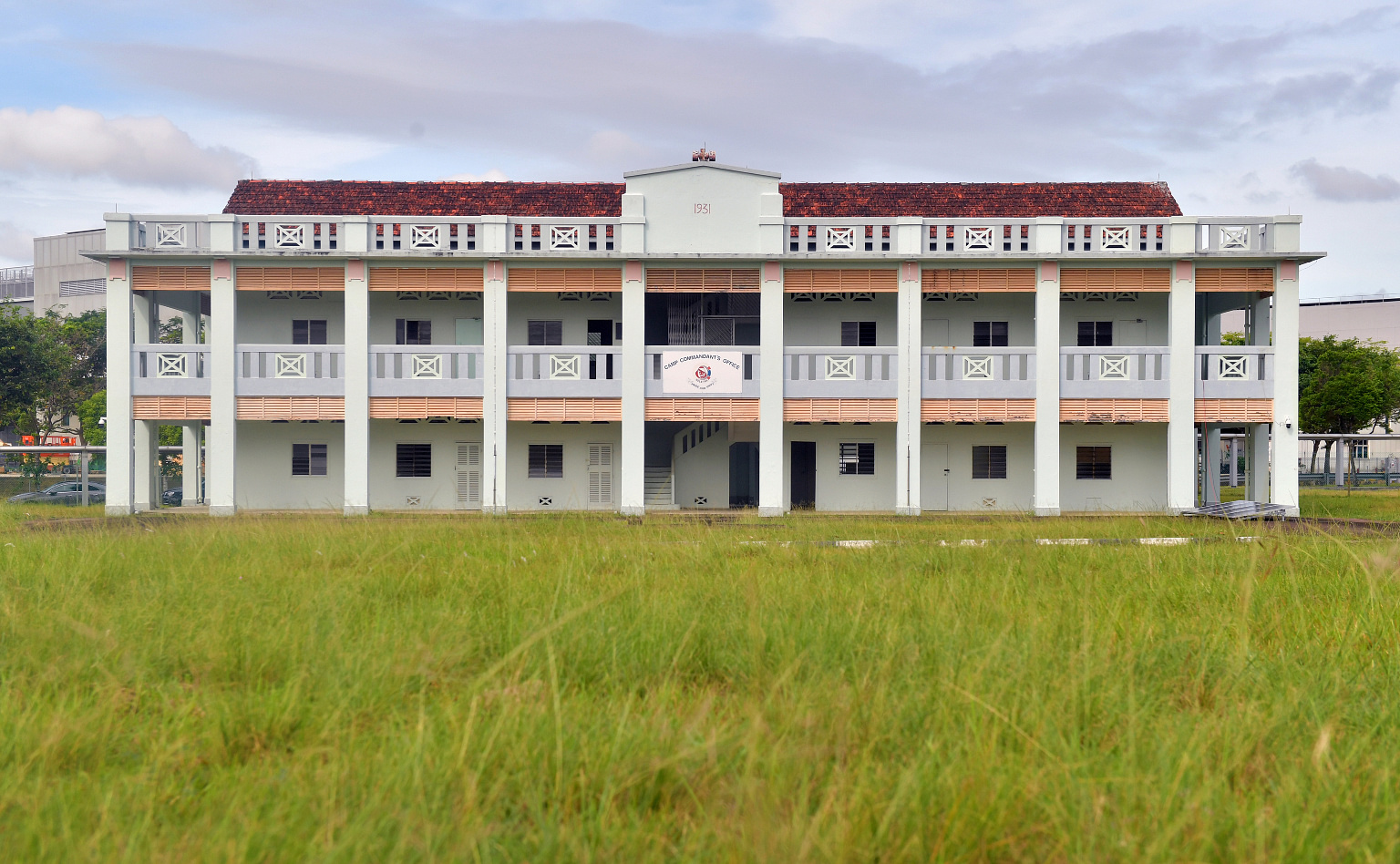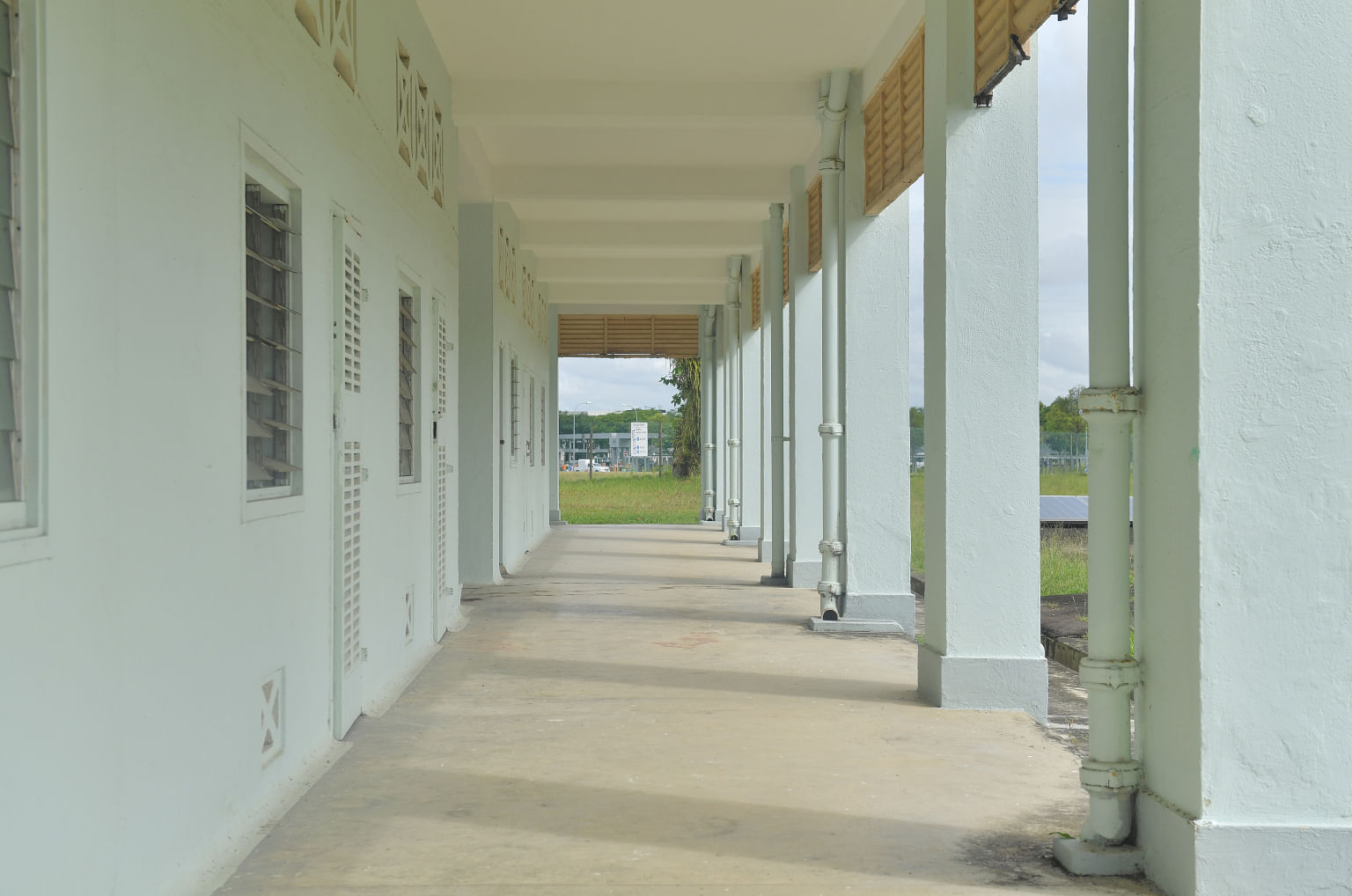Take a tour of Seletar building which tells Singapore's pre-war aviation history
Sign up now: Get ST's newsletters delivered to your inbox

Block 179 used to house the former station headquarters of the British Royal Air Force Seletar.
ST PHOTO: ALPHONSUS CHERN
Follow topic:
SINGAPORE - The first signs of war in Singapore in 1941 came by air.
On Dec 8, 1941, 17 planes from the Imperial Japanese Navy Air Force flew from Ho Chi Minh City in Vietnam to Singapore and dropped bombs.
One of the first properties to be destroyed was a wooden hut next to 179 Piccadilly in Seletar, where the former station headquarters of the British Royal Air Force (RAF) Seletar was located.
The 4am air raid left 61 people dead and 133 people injured islandwide. Three months later, the Japanese Occupation began.
To commemorate the 80th anniversary of the fall of Singapore, 179 Piccadilly, which is managed by the Singapore Land Authority, will be opened to the public from this Saturday (Feb 12).
It is an empty block situated on the open fields of Seletar. Two defunct safes sit in one of the rooms, and from the roof, one can take in a view of what air force commanders of decades past would have surveyed.
The tour is organised by the National Heritage Board (NHB), and costs $10 per participant.
Mr Gerald Wee, NHB's director of international and museum relations, said the tour would give people more insight into the air power of the British, which has often been relegated to a footnote in history.
"We often talk about the Japanese coming across the Causeway, or our guns pointing out at sea the wrong way. But not many people know about the history behind the Royal Air Force here.
"Seletar was one of the first places to be bombed," he said.
It was the first RAF base constructed in Singapore and was the largest British station in the Far East. It was considered so successful that it was used as a model for other RAF stations based in the region.
By the time of the war, Singapore had three RAF bases, the other two in Tengah and Sembawang. In its heyday, Seletar was visited by legendary actor Charlie Chaplin, as well as Amy Johnson, the first woman to fly solo from England to Australia.

Despite the Seletar base's impressiveness, the British never brought its best planes to Singapore. Their planes were quickly overwhelmed by the Japanese in any skirmish, and by January 1942, almost all of the British planes had been destroyed.
It is said that when the Japanese first arrived in Seletar, they were proud to have defeated a power that had managed to build such an outstanding facility. The Japanese used it as a training ground for their soldiers and got prisoners of war to build a runway.
Mr Lai Cheong Leong, 70, a former camp commandant of the Singapore Armed Forces (SAF) at Seletar camp, said he inherited one of the safes in 179 Piccadilly when he was in service there in the 1990s.
By then, the SAF had taken over the premises. The number combination no longer worked but a key lock was installed, and Mr Lai used it to store petty cash and confidential documents.

Mr Kevin Chern Kay Kin, 66, a retired major who also served at that camp, had a different story to tell.
He said: "On Oct 29, 1977, I was on duty at 179 Piccadilly when I received word that a hijacked Vietnamese plane was going to land at Seletar. I had to evacuate some people in the nearby buildings and (find accommodation for) the passengers from the hijacked plane.
"I also got the cookhouse to prepare food for them."

The plane was on a domestic flight in Vietnam when hijackers armed with a pistol and knives apparently seized it, before forcing it to land in Singapore where they appealed for political asylum.
It was later found that many of those aboard the plane were willing participants. However, two Vietnamese crew members were killed, and a third person was seriously injured.
Mr Wee said that from Saturday to March 6, apart from the 179 Piccadilly tour, there will also be about 70 activities and tours to choose from, as part of NHB's Battle for Singapore commemoration.
He added: "This year marks eight decades since the tumultuous period in our nation's history. Through Battle for Singapore 2022, we hope to provide Singaporeans with the opportunity to reflect on how our nation came to be and how far we have come, while honouring the sacrifices of our nation's war heroes."

